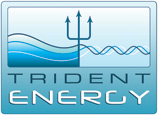Trident Energy’s Susie Allison explains how cooperation can lead to cost effectiveness in this summer’s Offshore Wind special edition from energyengineering magazine.
The article highlights the work being undertaken by Trident Energy to develop shared infrastructure solutions for combining wave power with offshore wind farms. We are working with the developers of offshore wind foundations to develop integrated solutions for the thousands of offshore wind turbines that will be installed globally over the coming decade.
Our CEO, Steve Packard, explains in the article that “installing wave technology on offshore wind farms means that one foundation is required rather than two and the grid connection is also shared. This allows more energy to be generated utilising common infrastructure, reducing the cost of energy.” He suggests that it is time for offshore wind developers to stop thinking of waves as a headache and see them as an opportunity to achieve higher capacity factors. Co-location, he says, is a win-win solution which offers sustainable, long-term cost reduction despite the increased challenges of deeper, more distant sites.
The article also describes how Trident Energy’s PowerPod can be used as a clean energy alternative to offshore diesel generation. Diesel generators are used offshore to power navigational lighting, motors/brakes and heating/cooling systems during the installation phase of offshore wind farms before the turbines are grid connected. The cost of running a diesel generator offshore is many times higher than its onshore equivalent. Co-located wave energy generation can substantially reduce these operating costs, even taking into account the provision of a diesel generator or battery pack to provide back-up power in unusually calm periods.
The full article is available by subscription at energyengineering.co.uk
